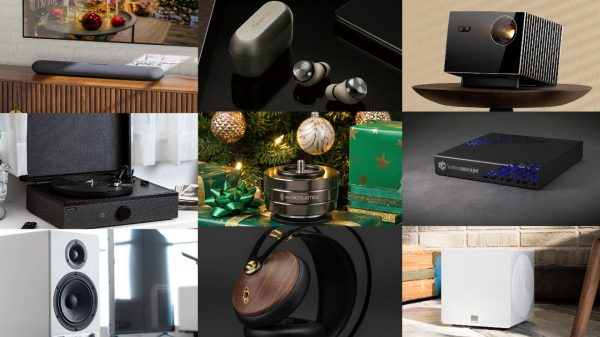Nokia and Samsung Continue Gains as Mobile Phone Volume Rises 13.8%, According to IDC
The worldwide mobile phone market grew at a healthy pace during the third quarter of 2007 with vendors shipping a total of 289.1 million units, according to IDC’s Worldwide Quarterly Mobile Phone Tracker. Worldwide shipments were up 9.0% from the previous quarter and 13.8% from the same quarter a year ago. Growth was driven by a combination of high-volume shipments of affordable handsets into emerging markets and high-end, feature-packed devices into mature markets. The leading vendors improved both revenues and profits, in some cases building on double-digit operating profit margins as they balance their product portfolios.
“On a worldwide scale, the mobile phone market continued to post positive results in the third quarter, even as vendors struggle to balance revenue and profitability,” said Ramon Llamas, research analyst with IDC’s Mobile Devices Technology and Trends team. “On the one hand, emerging markets have required vendors to provide low-cost handsets, which boost volume but reduce revenue and sometimes profit per device. On the other hand, mature markets have an appetite for higher-end handsets that can generate more revenues and profit. The leading vendors have been successful at balancing features and price for the distinct markets in a highly competitive space.”
“While growth in the overall mobile device industry has slowed over the past few quarters, the converged mobile device segment continues to grow several times faster than traditional phones, and accelerated to more than 50% year-on-year growth in the third quarter,” added Ryan Reith, senior research analyst with IDC’s Mobile Phone Tracker. “A wide selection of devices, combined with declining initial price points have made this segment of the market an immense growth opportunity for manufacturers. At the same time, this space is attractive for the operators because these devices are often bundled with a data plan, which in turn means increased revenue per user.”
Top Five Mobile Phone Vendors
Nokia posted its second consecutive quarter of 100+ million units, and shipped more units than the next three vendors combined. This accomplishment emphasizes Nokia’s size, but was also notable since the company was handicapped by component shortages. Despite a depressed average shipment price resulting from a high volume of entry level 1110 and 1116 models, Nokia was able to realize operating margin improvement across all of its device categories due to scalability, lowered cost structures, distribution, and brand recognition. Entry level devices made up the bulk of Nokia’s shipments, but its converged mobile devices and feature phones helped drive revenues and profits.
Samsung marked its second consecutive appearance in the number two spot worldwide, this time extending its lead over Motorola to 5.4 million units for the quarter. On a year-to-date basis, Samsung still trailed behind Motorola, but cut that gap to only 3.3 million units. The company realized double-digit operating profit margin by shipping more high-end devices including its popular Ultra Edition handsets.
Motorola kept the number three spot worldwide for the quarter, and was the only leading vendor to post a negative year-over-year shipment delta. Although its Mobile Devices segment suffered a consecutive operating loss, Motorola improved sales slightly from the previous quarter by $0.2 billion. Helping improve its revenue were some of its newly released devices, including the music-optimized Motorola U9, two new Z6 devices, and nearly a million RAZR 2 devices.
Sony Ericsson remained in fourth place for the sixth consecutive quarter, and continued its string of quarterly double digit operating profit margin even while more aggressively building its presence within emerging markets. While the company’s Walkman-branded phones, including its successful W580, have been popular selection for the high end of its portfolio, they have also become available with its low-end and mid-tier segments with the W200, enabling Sony Ericsson to capture more users. In addition to capitalizing on its Walkman sub-brand, Sony Ericsson has also found success with Cybershot and Bravia sub-brands, attracting those looking for phones optimized for digital image capture and enhanced display. Sony Ericsson growth slowed to 31% from roughly 60% in the prior three quarters as volume increased, but Samsung grew notably faster during the third quarter.
LG Electronics took fifth place once again during the quarter, and closed the gap behind Sony Ericsson to just four million units. While North America remained one of the company’s shipment targets, the company cited success within emerging markets, particularly Latin America with its MG and MX 200 series devices. To this end, LG relied on its entry level devices to attract first time users, a move that negatively impacted its profits, but only slightly since the company’s steps to improve cost structures mitigated against potential losses. -0-
Top Five Mobile Phone Vendors, Worldwide Shipments, Market Share, and Year-over-Year Growth, Q3 2007
(Units in millions)
| 3Q07 Shipments | 3Q07 Market Share | 3Q06 Shipments | 3Q06 Market Share | 3Q07/3Q06 Growth | |
| Nokia | 111.7 | 38.6% | 88.5 | 34.8% | 26.2% |
| Samsung | 42.6 | 14.7% | 28.9 | 11.4% | 47.4% |
| Motorola | 37.2 | 12.9% | 53.7 | 21.1% | -30.7% |
| Sony Ericsson | 25.9 | 9.0% | 19.8 | 7.8% | 30.8% |
| LG Electronics | 21.9 | 7.6% | 16.6 | 6.5% | 31.9% |
| Others | 49.8 | 17.2% | 46.5 | 18.3% | 7.1% |
| Total | 289.1 | 100.0% | 254.0 | 100.0% | 13.8% |
Source: IDC Worldwide Quarterly Mobile Phone Tracker, October 25, 2007
Note: Vendor shipments are branded shipments and exclude OEM sales for all vendors.
Mobile Phones – These small, battery-powered, voice-centric devices utilize operator-provided cellular/PCS air interfaces for voice communication. They are designed primarily, in both form factor and feature set, for a compelling mobile telephony experience, but may also include text-messaging capability. Mobile phones may include a headset jack for hands-free operation as well as a variety of features, such as personal information management, multimedia, games, or office applications. Mobile phones exist at all points along the form factor, price point, and feature set continua. Mobile phones that combine voice communications capabilities with pen or keypad handheld data features are tracked within the Converged Devices category.
For more information about IDC’s Worldwide Quarterly Mobile Phone Tracker, please contact Kathy Nagamine at 650-350-6423 or knagamine@idc.com.
About IDC
IDC is the premier global provider of market intelligence, advisory services, and events for the information technology, telecommunications, and consumer technology markets. IDC helps IT professionals, business executives, and the investment community make fact-based decisions on technology purchases and business strategy. Over 850 IDC analysts in 50 countries provide global, regional, and local expertise on technology and industry opportunities and trends. For more than 42 years, IDC has provided strategic insights to help our clients achieve their key business objectives. IDC is a subsidiary of IDG, the world’s leading technology media, research, and events company. You can learn more about IDC by visiting http://www.idc.com.
All product and company names may be trademarks or registered trademarks of their respective holders.























